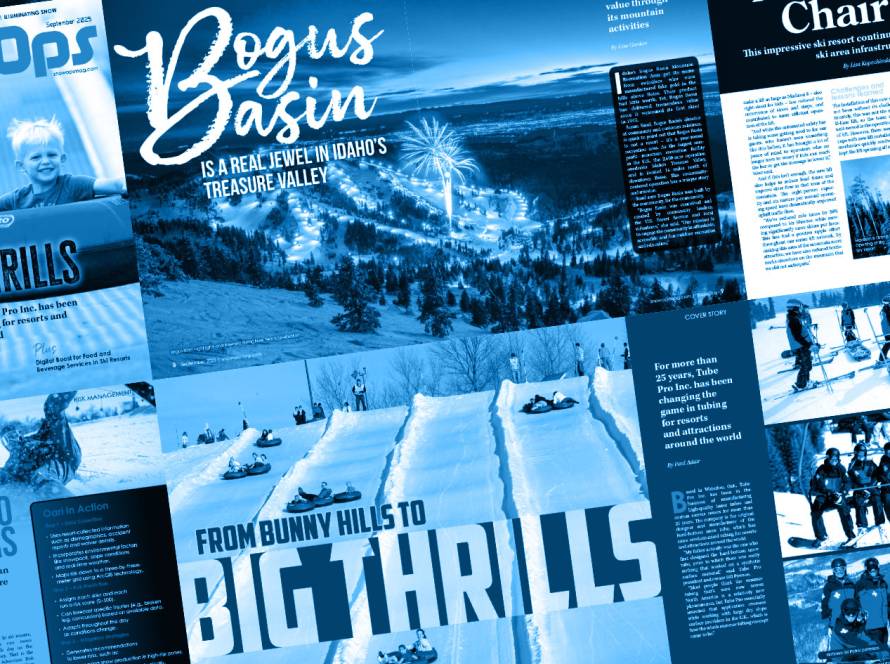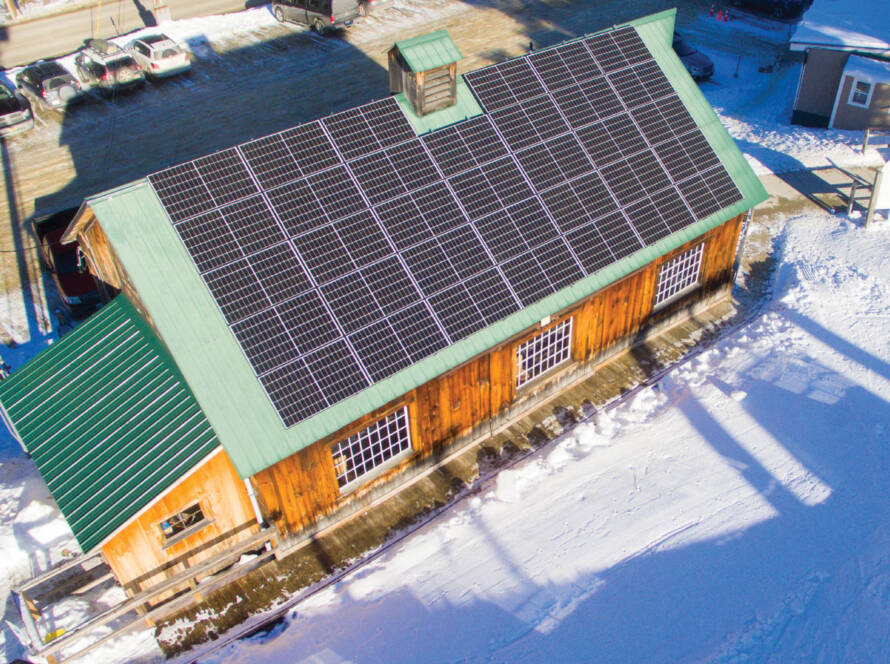Tucker Sno-Cat has made a name for itself over its 78-year history and is considered “the oldest successful manufacturer of snow vehicles in the world.” Although the company continues to move forward, they remember and honor their roots with their Classic Cats by Tucker restoration program.
Based in Medford, Ore., Tucker Sno-Cat was founded in 1942 by E.M. Tucker Sr., and is currently still owned and operated by the Tucker family:
- CEO – Maralee Tucker Sullivan (3rd generation Tucker)
- President – Marcus McNeil (4th generation Tucker)
- Vice president – Jeff McNeil (4th generation Tucker)
- Purchasing manager – Steven Tucker (4th generation Tucker)
History
The late E. M. Tucker, Sr., was one of 13 children, born in a log cabin on Jump-Off Joe Creek in 1892, near Grants Pass, Ore. He spent his early boyhood near Trail, Ore., in a stone house built by his father in 1901. The house overlooks a broad stretch of Rogue River and is still a landmark.
During his youth he walked to school through deep snow, and even at this early age he began working on different devices for transportation over snow which eventually led to the development of the world famed Tucker Sno-Cat® vehicle. In the early 1920s, Tucker built several spiral driven machines, but had very little success with the principle involved. After these experiences, Tucker realized that unless he could come up with a completely different system, he would never achieve his desire to build a vehicle to travel over deep, soft snow with a minimum amount of mechanical trouble and expense.
Tucker worked in Los Angeles on prototypes, perfecting the idea of an over-snow transportation. He then moved to Grass Valley, Calif., where the first production line was established. This successful venture was terminated by a move to Medford, Ore., a decision driven by Tucker’s long expressed desire to return to the Rogue River Valley. Tucker spent 50 years building and improving his snow machines and his firm is recognized as the oldest successful manufacturer of snow vehicles in the world.
During the second half of the 20th century, different models have been used for expeditions in the Arctic and Antarctica. The Sno-Cat differs from other truck-sized snow vehicles, commonly known as snowcats, by its use of four independently mounted tracks.
Tucker today
Today, the Tucker Sno-Cat® Corporation continues manufacturing and selling over snow vehicles. The company also has an agricultural division that specializes in soft ground applications as well as a full factory service department. As well, the company supports sales and service worldwide through authorized dealers.
“Tucker Sno-Cat® manufactures over snow vehicles for many different applications,” said Tucker Sno-Cat sales manager John Meilicke. “Tucker’s largest market would be snowmobile trail grooming, while utility in the Western United States and Canada would be a close second. I would say the model 2000 Tucker Trail Groomer would be our most popular product. And the 2000Xtra Lite utility machine would be next in line.
“Our Tucker Sno-Cat vehicles are known for having four articulating tracks that provide the ultimate traction advantage in steep terrain and blizzard conditions while leaving a gentle footprint over snow covered ground. Smoother turns and better navigation of obstacles are a favorite of companies needing to access remote locations.”
Over the years, Tucker Sno-Cat has had to overcome many challenges to maintain success on a global scale. For example, United States Environmental Protection Agency requirements and keeping up with the current emission standard can be very time consuming and costly. Other challenges include price increases from outside vendors and low snow years.
“Price increases can be a challenge. Especially with the limited budgets that are associated with snowmobile trail grooming,” said Meilicke. “And with the low snow years, selling products worldwide definitely helps because Tucker is not dependent on only selling products in one territory.”
Classic cats
Recently, Tucker Sno-Cat has also branched out a little in their business with its Classic Cats program which buys, sells and restores classic cats. The company saw the demand for restored or operational classic cats and parts. Along with that, during the slow season on the new vehicles production side, it was a way to keep employees employed and busy.
“Tucker was so successful building quality Cats from the beginning, that many of the early models are still in existence today and so the idea was born to restore these Classic Cats,” said Meilicke. “The clean lines and craftsmanship of these original Cats are timeless, so whether they are restoring a Cat to its original glory or updating it with a custom look, the charm of the Sno-Cat® shines through. We source the Classic Cats through word of mouth, the website and various shows.”
Clyde Moody is the vintage restoration manager at Tucker Sno-Cat and his help depends on what needs to be worked on (i.e. welding, track work or painting). The company uses a lot of different workers throughout a cat project.
“Restoration has many levels depending on what the customer wants,” said Moody. “A ground up (full) restoration is the most complex.
“You start by talking with the customer and finding out what they like such as the color, finishes, interior materials, options: i.e. winches, roof rack, stereo, etc., and then how they will use it. Then you start stripping the cat to the ground, pulling the motor and getting it sent out to get rebuilt. The transmission and transfer case we rebuild in house. Once all the skins are off you send the frame, pontoons and major parts to sandblast and on their return, you check for any damage and/or cracks that may have occurred in the last 50 or so years of use. Once you have reworked the frame for options or repair, you then put the skins back on and test fit your new options before paint or primer.
“At the same time there is also a massive amount of smaller parts that are getting sandblasted, painted, going to chrome or being coated. We upgrade some parts to modern technology and put in bushings, bearings and this type of thing where back in the day it was metal on metal or something – we can update and make it safer. Once the cab comes back from paint, we put the motor, transmission and transfer case in and then move to electrical and interior. After that we move to the fifth wheel plates and differentials.
“At that point we can do what we call ‘A Three Mile,’ where the Cat gets started and we run up the [revolutions per minute] and put it in gear and run the drive train for three miles, hence the name ‘Three Mile.’ After that we install the pontoon and track system and then give it a drive test.”
Each Classic Cat restoration is quite the project and the finished product shows just how much work goes into each one. If customers are interested in purchasing a restored cat, Tucker Sno-Cat has a couple stock models in their yard or people can bring in their own to be refurbished. The timeline for restoring a cat is different for each one as it depends on the size, model and year of the Cat and how custom the client would like it.
Classic Cats by Tucker is proud to be a part of history and continuing the legacy that E. M. Tucker Sr. started in the early 1900s. The company also offers maintenance training seminars for both grooming and utility customers. These two-day maintenance seminars occur during the summer months.
“These seminars are a great opportunity for customers to meet the Tucker team here in Medford, Ore.,” said Meilicke. “We will have the training dates posted on our website by May 1. And Tucker will also have them listed on the monthly newsletter.”
When asked what accomplishments the company is most proud of, Meilicke falls back on tradition. “We’re most proud of our 4-track technology (4-track advantage), the fact that we’re American made, been in business for 78 years and that we are still family owned and operated by the Tucker family after all these years; it’s really quite special.
“Tucker Sno-Cat® Corporation plans to continue to manufacture top quality equipment that is made in the U.S.A. Tucker continues to move forward with technology and design while listening to customers who have requests and recommendations. Tucker Sno-Cat® Corporation will continue to keep customers in a very safe top quality over snow vehicle for many years to come!”

